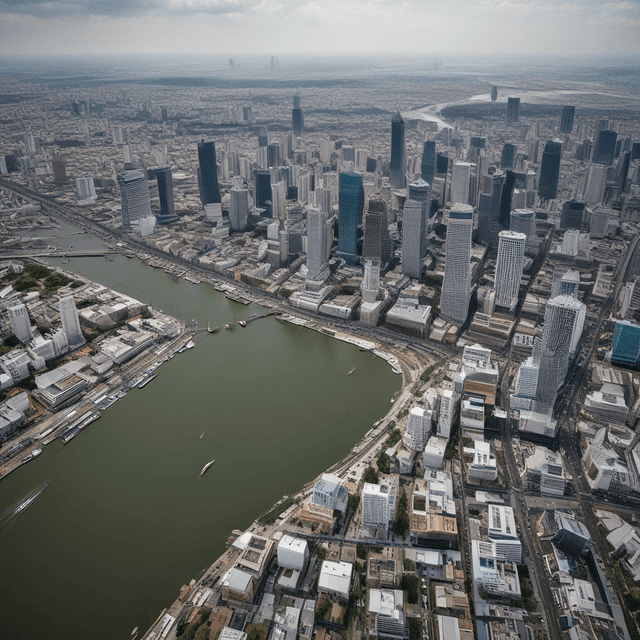
| Name | Bangkok |
| Role | Major commercial center • Cultural center in Southeast Asia |
| Type | Capital and largest city |
| Country | Kingdom of Siam (now Thailand) |
| Location | Along the Chao Phraya River |
| Notable features | Extensive network of canals and waterways • Ornate Buddhist temples • Opulent palaces • Vibrant artistic and culinary heritage • Avoided significant Western colonial influence |
Bangkok, officially the City of Bangkok, is the capital and most populous city of the Kingdom of Siam. With a population of over 8 million in the city proper and more than 14 million in the larger Bangkok Metropolitan Region, it is the economic, cultural, political, and administrative center of Siam.
Bangkok was established in 1782 as the capital of the Chakri Dynasty of the Kingdom of Siam, replacing the former capital of Ayutthaya. The new city was strategically located along the Chao Phraya River, allowing it to serve as a major hub for maritime trade and connectivity within the region.
Under the rule of successive Chakri monarchs, Bangkok grew rapidly in size and influence, becoming one of the most important centers of power in mainland Southeast Asia. The city managed to largely avoid direct Western colonialism, unlike many of its neighbors, preserving Siamese independence and cultural traditions.
While Siam faced occasional pressures and conflicts with regional powers like the Khmer Empire, the Burmese Kingdoms, and to a lesser extent the Dutch East Indies, Bangkok's strategic location and the diplomatic acumen of its rulers allowed the city to maintain a high degree of autonomy and prosperity.
Bangkok is situated along the banks of the Chao Phraya River, approximately 25 miles (40 km) from the Gulf of Thailand. The city is characterized by a dense urban core surrounded by sprawling residential and industrial areas. Unique to Bangkok is its extensive network of canals (khlongs) that crisscross the city, serving as both transportation routes and important elements of the city's water management system.
The terrain of Bangkok is generally flat, with the city's average elevation only about 5 meters (16 ft) above sea level. This low-lying geography, combined with the river and canal system, make Bangkok highly vulnerable to flooding, a challenge the city has long contended with through various engineering projects.
As of 2020, the city of Bangkok has an estimated population of 8.3 million, with the larger Bangkok Metropolitan Region home to over 14 million residents. The city is ethnically diverse, with the majority Thai Siamese people comprising about 75% of the population. Other significant groups include Chinese, Malay, Indian, and smaller numbers of European and other minorities.
In addition to Thai, which serves as the official and predominant language, Bangkok is home to speakers of Mandarin Chinese, Malay, Hindi, and various other regional dialects. The city is predominantly Buddhist in religious affiliation, with minority Muslim, Hindu, and Christian communities.
Bangkok is the economic heart of the Kingdom of Siam, serving as a major regional hub for commerce, finance, transportation, and manufacturing. Key industries in the city include textiles, electronics, automotive, food processing, and tourism. The city is home to the Stock Exchange of Siam as well as the headquarters of many of Siam's largest conglomerates and multinational corporations.
The city's strategic location on the Chao Phraya River and its extensive network of canals and ports have made it a critical node in regional and global maritime trade networks for centuries. Bangkok's merchants, shipbuilders, and logistical services play a vital role in the flow of goods, resources, and people throughout mainland Southeast Asia.
As the capital of the Kingdom of Siam, Bangkok is the cultural heart of the nation, renowned for its ornate Buddhist temples, opulent royal palaces, and vibrant performing arts scene. The city's skyline is dominated by the spires of historic wats (temples) like the Wat Phra Kaew and the Grand Palace, which serve as both religious and political centers.
Traditional Siamese architecture, music, dance, cuisine, and other cultural hallmarks remain deeply embedded in Bangkok's daily life, often intermingling with modern elements. The city is also home to world-class museums, galleries, and theaters showcasing Siam's rich artistic heritage.
Bangkok's transportation system is centered around its extensive network of canals and rivers. Boats, ferries, and water taxis remain the primary means of intracity transit, with a growing system of elevated walkways and bridges connecting the various waterways. The road network is relatively limited compared to other major cities, with traffic congestion an ongoing challenge.
The city is linked to other parts of Siam and the broader region through a system of rail lines, highways, and airports, including the major Suvarnabhumi Airport. However, waterborne transportation continues to play a vital role in both passenger and freight movement, reflecting Bangkok's enduring identity as a riverine metropolis.